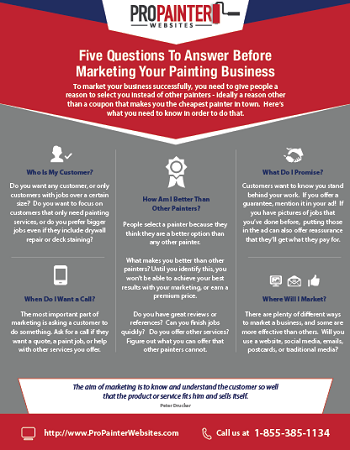Crucial Seasonal Aspects Of Commercial Outside Painting: What You Ought To Understand
Crucial Seasonal Aspects Of Commercial Outside Painting: What You Ought To Understand
Blog Article
Material Create By-McLamb Celik
When you're planning an industrial outside paint job, seasonal aspects can make or break your outcomes. You'll want to take into consideration just how temperature level and humidity impact paint application and drying out times. Choosing the best season can ensure your paint sticks effectively and lasts longer. But which seasons are genuinely the best for this sort of work? Let's explore the crucial elements that can affect your project's success.
The Impact of Temperature Level on Paint Application
When you're preparing a business outside paint task, the temperature can substantially impact how well the paint sticks and dries out.
Preferably, you want to repaint when temperatures vary in between 50 ° F and 85 ° F. If it's too cold, the paint may not treat correctly, leading to issues like peeling off or fracturing.
On the other hand, if it's too hot, the paint can dry out too promptly, avoiding appropriate attachment and causing an uneven surface.
You need to additionally consider the moment of day; early morning or late afternoon uses cooler temperatures, which can be much more favorable.
Constantly check the manufacturer's referrals for the certain paint you're using, as they usually supply support on the ideal temperature level array for optimal outcomes.
Humidity and Its Impact on Drying Times
Temperature isn't the only environmental variable that affects your industrial outside painting task; moisture plays a significant function too. High moisture levels can decrease drying times dramatically, influencing the general quality of your paint task.
When the air is filled with dampness, the paint takes longer to heal, which can cause issues like inadequate bond and a higher threat of mildew growth. If you're repainting on a specifically moist day, be gotten ready for extensive delay times between coats.
It's important to keep an eye on regional climate condition and strategy appropriately. Ideally, go for moisture levels in between 40% and 70% for ideal drying.
Keeping these consider mind guarantees your job stays on track and provides a long lasting surface.
Best Seasons for Commercial Outside Paint Projects
What's the very best time of year for your commercial outside painting projects?
Springtime and very early autumn are commonly your best options. During these periods, temperatures are light, and humidity levels are usually reduced, developing ideal problems for paint application and drying.
Prevent summer's intense heat, which can cause paint to dry too promptly, leading to bad adhesion and finish. Similarly, winter season's cold temperature levels can prevent appropriate drying and healing, running the risk of the durability of your paint job.
Go for days with temperatures between 50 ° F and 85 ° F for optimal outcomes. local house painters near me in mind to check the neighborhood weather report for rainfall, as damp problems can wreck your job.
Planning around these variables ensures your painting job runs smoothly and lasts much longer.
Final thought
Finally, planning your business external paint jobs around seasonal factors to consider can make a considerable difference in the end result. By scheduling work during the suitable temperature levels and moisture levels, you'll ensure better adhesion and drying out times. Keep in mind to watch on local weather forecasts and select the right time of year-- spring and very early loss are your best bets. Taking https://www.homesandgardens.com/interior-design/paint/a-guide-to-matte-paint will assist you achieve a long lasting and specialist finish that lasts.
